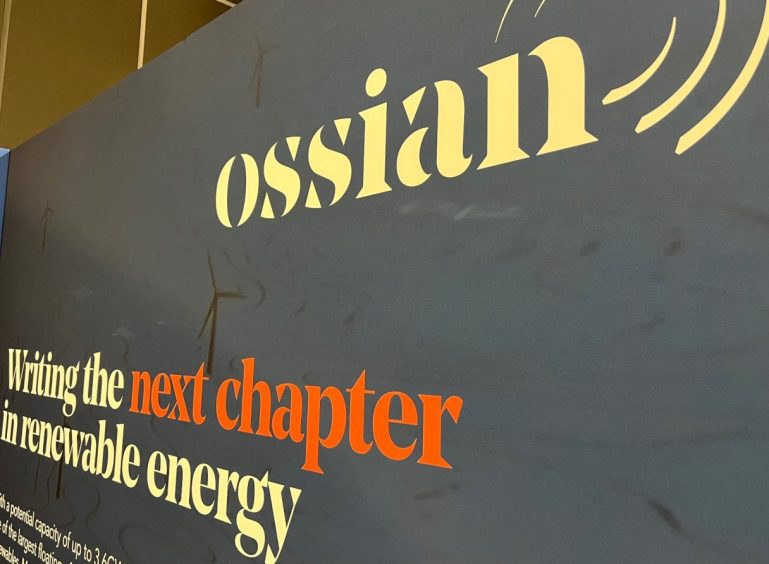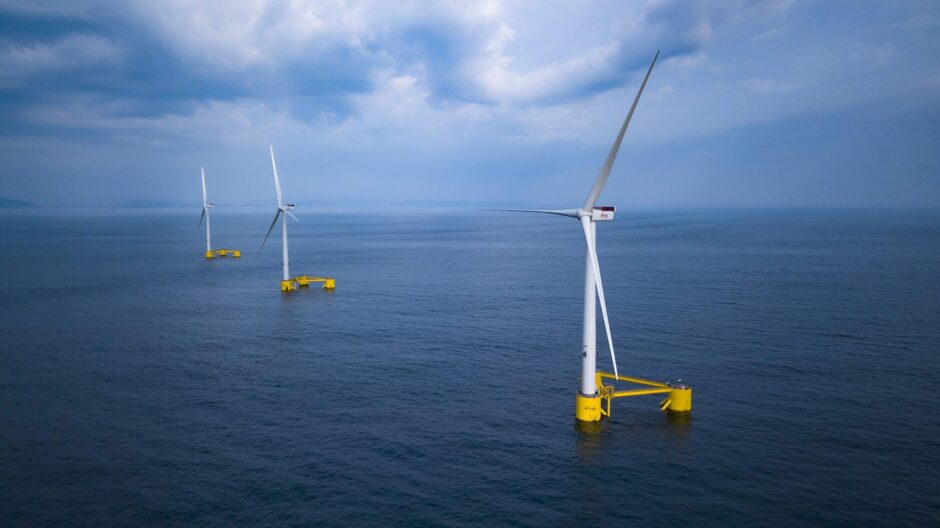
Last year It was reported that the Ossian floating offshore wind farm would be targeting 3.6GW, a gigawatt upgrade to what was initially advertised.
Kevin Murphy, deputy senior project manager on the renewable project set for the waters off the east coast of Scotland, explained: “Having done the geophysical survey which started last year and starting the site characterisation work, from the early information that came in there we realised there’s potential to squeeze a lot more capacity out of the site.”
Recently, the project’s developers agreed on a partnership with the British Geological Survey (BGS) to share survey data from the site of the wind farm.
Ossian is being developed by a consortium comprised of SSE Renewables, Marubeni and Copenhagen Infrastructure Partners (CIP).
The partners secured the up-to-3.6GW site in the E1 area around 50 miles off the Angus Coast as part of the ScotWind leasing round last year.
‘It’s still early days’ for Ossian
It was announced in November that the project partners were looking to “squeeze” more out of Ossian.
If the project is successful in delivering its projected 3.6GW capacity, Ossian will find itself among the top five largest floating offshore wind farms globally.
Mr Murphy told Energy Voice: “We are still planning on going forward on that basis.
“It’s still early days and we’re talking about building out towards the end of the decade so there’s a lot of moving parts but from our perspective, that’s still what we’re aiming for.”
Given that Ossian is in an early stage of development as the project partners still look to carry out surveys, the gigawatt increase in power output has not presented too many challenges for Mr Murphy’s team at the moment.
The Ossian deputy senior project manager explained: “At this early stage in development the immediate activities, whether that’s ornithological surveys or we were doing our geotechnical surveys this summer.
“We are characterising the site at this stage, so it doesn’t necessarily have an immediate impact on the activities we’re doing now.”
Increasing the workload
However, the increased ambition for the project will result in more work being needed to bring the wind farm online as development progresses.
Mr Murphy said: “Obviously, the impact it’s going to have will be coming later when we’re engaging with the supply chain, the step up to that size means more turbines, more floaters in a supply chain that is already quite constrained.”
The project’s deputy senior project manager said that Ossian was able to carry out “a lot” of the supply chain engagement he spoke about while at the Floating Offshore Wind Conference in Aberdeen.
However, Mr Murphy added that grid connection uncertainty “Hampers the ability to really have those discussions with suppliers and say ‘we need X capacity in this two, three, four-year window’.”
These prove to be the issues for Ossian moving forward, the challenges that come with scaling up the project are ones that the team are “happy to take on”, says Mr Murphy, but the lack of certainty around grid connection and a constrained supply chain are the real concerns for the floating wind project.
Ossian team ‘disappointed’ by AR5 results
A recent report into the UK’s electricity infrastructure called for ‘vital’ reforms to consenting in Scotland to ensure enough transmission can be built to accommodate new wind generation.
Published earlier this year by Electricity Networks Commissioner Nick Winser, the report made a series of recommendations to the government in a bid to improve grid bottlenecks and halve the time for new transmission construction, from 14 years to seven.
The grid has become a hot topic within the energy sector as renewable energy projects struggle to connect electricity produced to it.
Another recent sticking point for the offshore wind market in the UK was the results of Allocation Round Five (AR5).
There were no bids for new offshore wind farms in the government’s contracts for difference (CfD) auction following industry leaders calling for reform to the system.
Prices were seen as no longer cost-effective as the offshore wind market experienced cost inflation.
Despite not bidding in AR5, the Ossian team were “disappointed” in the news of no new bids.
Mr Murphy said: “It doesn’t have a direct impact, but it has an indirect impact because Ossian is a huge development, and it needs the early projects to come through, particularly in the floating space, because the supply chain is not going to ramp up overnight so you need those stepping stone, the smaller scale floating projects that can grow and establish that supply chain.”
He added: “The fact that there were no successful projects, none of the floating projects in particular for us, is disappointing and hopefully the positive is that that’s been a bit of a wakeup call in terms of the current system, the current price floors aren’t working and won’t work long term, given the cost increases that everyone is seeing.”
Recommended for you

 © Supplied by SSE Renewables
© Supplied by SSE Renewables © Supplied
© Supplied